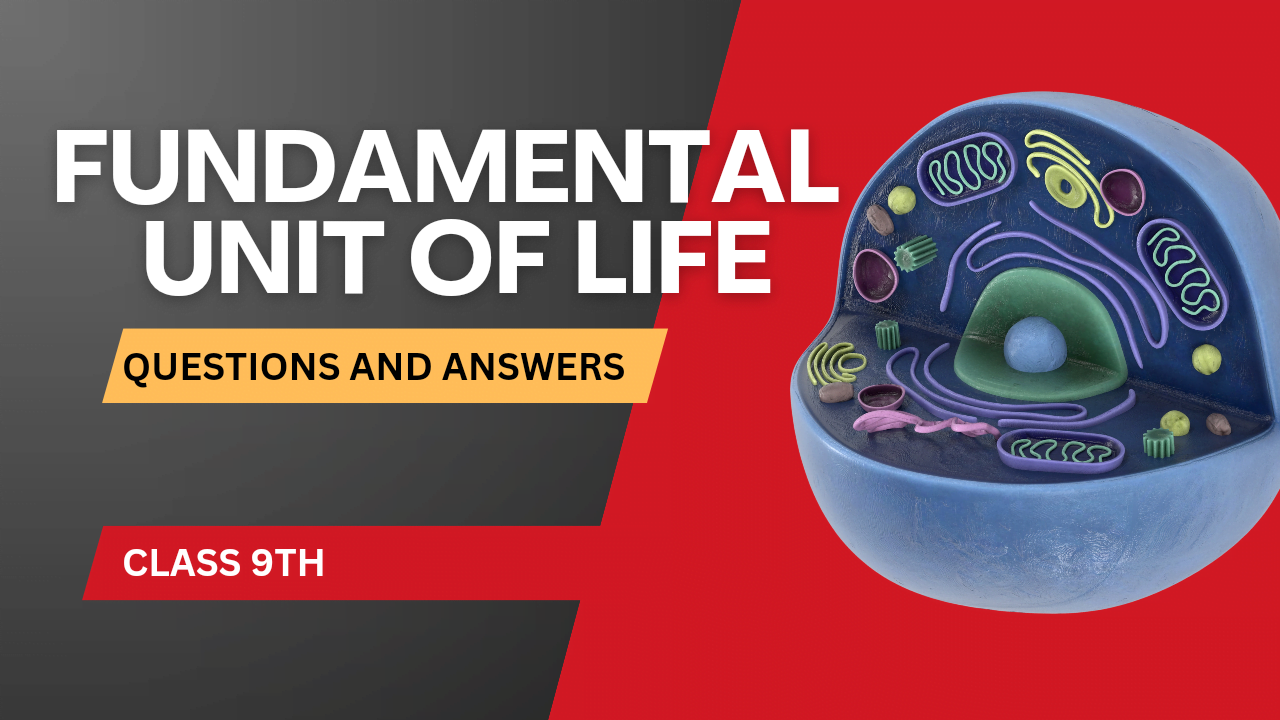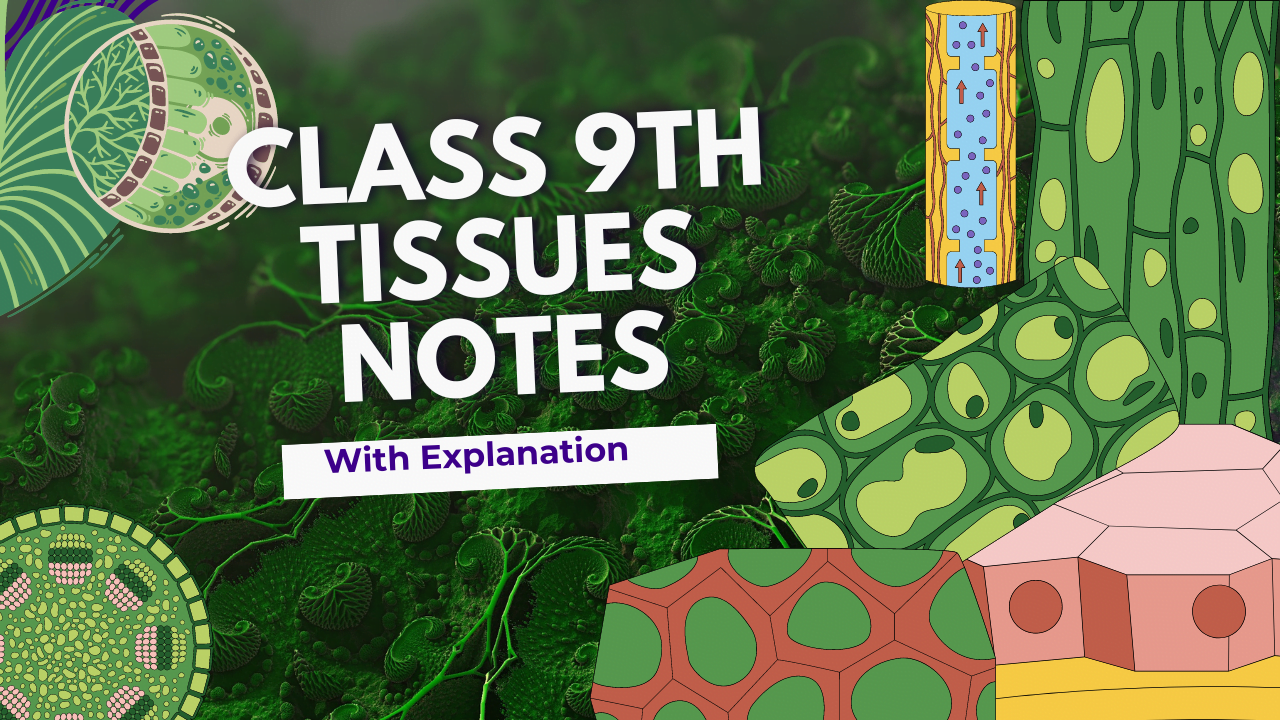The fundamental unit of life class 9 notes
All living organisms are made up of cells, which are the basic structural and functional units of life. This chapter introduces you to the fascinating world of cells, their discovery, structure, and functions.
1. Discovery of the Cell
Robert Hooke (1665): Observed cork cells under a primitive microscope and coined the term “cell” for the honeycomb-like structures he saw.
Anton van Leeuwenhoek (1674): First observed living cells (bacteria, protozoa) using improved microscopes.
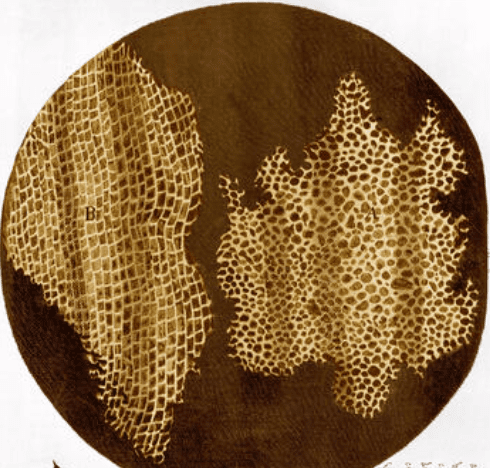
Robert Hooke’s drawing of cork cells
2. Cell Theory
The cell theory, formulated by Schleiden and Schwann (1838-39), states:
- All living organisms are composed of cells
- The cell is the basic unit of life
- All cells arise from pre-existing cells (added by Virchow, 1855)
3. Types of Cells
Prokaryotic Cells
- Primitive cells without a defined nucleus
- Genetic material not enclosed in nuclear membrane
- Lack membrane-bound organelles
- Example: Bacteria, blue-green algae
Eukaryotic Cells
- Advanced cells with well-defined nucleus
- Genetic material enclosed in nuclear membrane
- Contain membrane-bound organelles
- Example: Plant and animal cells
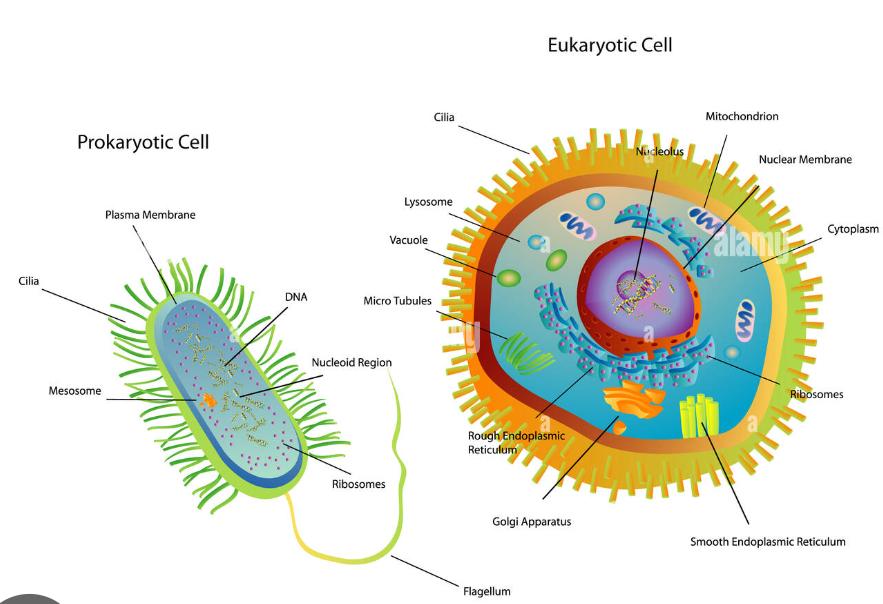
Comparison of prokaryotic and eukaryotic cells
4. Cell Structure
Plasma Membrane (Cell Membrane)
- Outer covering of the cell
- Semi-permeable – allows selective movement of substances
- Made of lipids and proteins (fluid mosaic model)
Functions of Plasma Membrane:
- Protects the cell
- Regulates movement of materials in and out
- Maintains cell shape
- Cell recognition and communication
Cell Wall (Plant Cells Only)
- Rigid outer layer outside plasma membrane
- Made of cellulose
- Provides shape, rigidity and protection
Cytoplasm
- Jelly-like substance between nucleus and plasma membrane
- Contains organelles suspended in cytosol
- Site for many biochemical reactions
Nucleus
- Control center of the cell
- Contains chromosomes (DNA + proteins)
- Surrounded by nuclear membrane with pores
- Contains nucleolus (produces ribosomes)
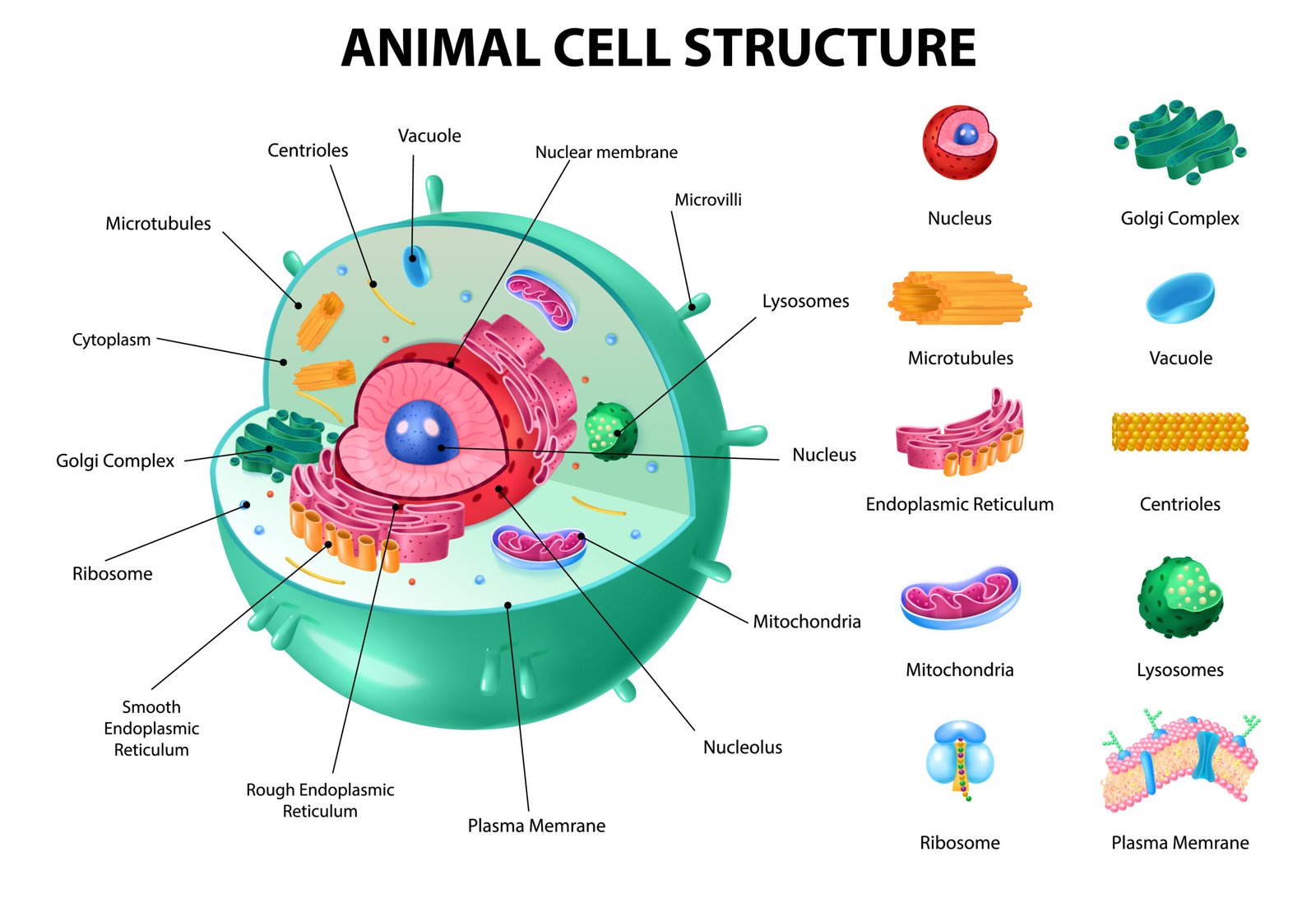
Diagram of a typical animal cell
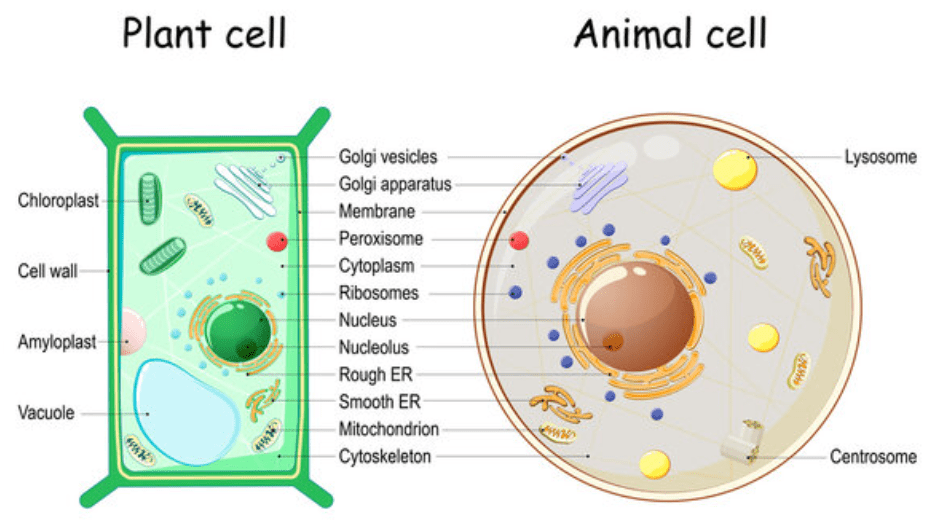
Diagram of a typical plant cell
5. Cell Organelles
| Organelle | Structure | Function |
|---|---|---|
| Endoplasmic Reticulum (ER) | Network of membranes (rough ER has ribosomes) | Transport, protein synthesis (rough ER), lipid synthesis (smooth ER) |
| Golgi Apparatus | Stack of flattened sacs | Packaging and secretion of cellular products |
| Lysosomes | Membrane-bound sacs with digestive enzymes | Intracellular digestion, waste disposal |
| Mitochondria | Double membrane with inner folds (cristae) | Powerhouse of cell – ATP production |
| Plastids (Plant cells) | Double membrane organelles | Chloroplasts (photosynthesis), chromoplasts (pigments), leucoplasts (storage) |
| Vacuoles | Fluid-filled sacs | Storage (large central vacuole in plants), waste disposal |
| Ribosomes | Tiny granules (some free, some on ER) | Protein synthesis |
6. Differences Between Plant and Animal Cells
| Feature | Plant Cell | Animal Cell |
|---|---|---|
| Cell Wall | Present | Absent |
| Shape | Rectangular (fixed) | Round/irregular |
| Plastids | Present | Absent |
| Vacuoles | Large central vacuole | Small, temporary vacuoles |
| Centrioles | Absent | Present |
7. Important Processes
Diffusion
Movement of particles from higher to lower concentration (e.g., exchange of O₂ and CO₂ in lungs)
Osmosis
Diffusion of water across a semi-permeable membrane from dilute to concentrated solution
Hypotonic solution: External solution is dilute → cell gains water
Hypertonic solution: External solution is concentrated → cell loses water
Isotonic solution: Same concentration → no net movement
8. Frequently Asked Questions
Q: Why are lysosomes called suicide bags?
A: Lysosomes contain digestive enzymes that can break down cellular components. When a cell is damaged, lysosomes may burst and digest their own cell, hence called “suicide bags”.
Q: Why is mitochondria called the powerhouse of the cell?
A: Mitochondria produce ATP (energy currency of the cell) through cellular respiration, hence called powerhouse.
Q: Why is the cell membrane called selectively permeable?
A: It allows only certain substances to pass through while restricting others, based on size, charge, and other factors.
9. Summary
- Cell is the basic structural and functional unit of life
- Two main types: prokaryotic and eukaryotic
- Major cell components: plasma membrane, cytoplasm, nucleus
- Various organelles perform specialized functions
- Plant and animal cells have key differences
- Important processes: diffusion, osmosis
For better understanding, try these activities:
- Prepare onion peel slide to observe plant cells under microscope
- Observe human cheek cells under microscope
- Experiment to demonstrate osmosis using raisins or potato


